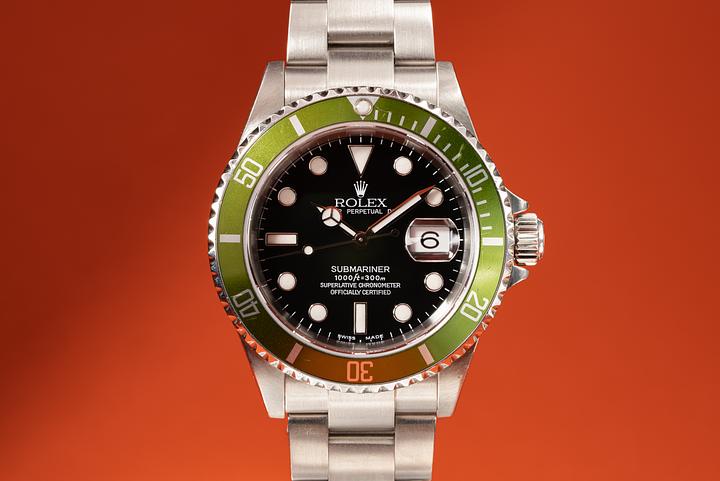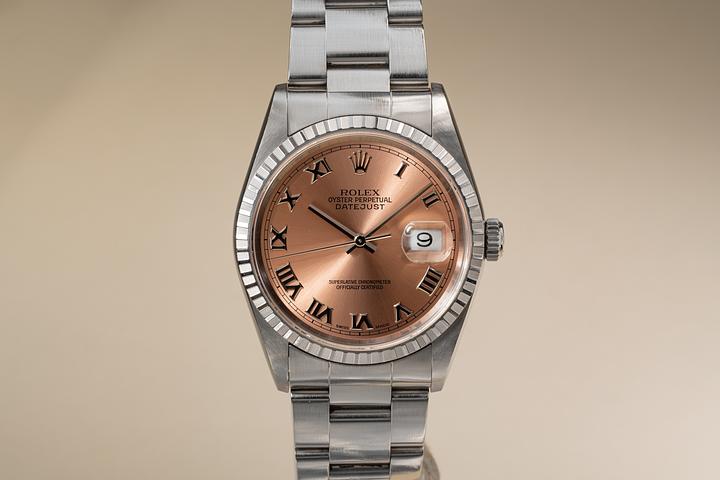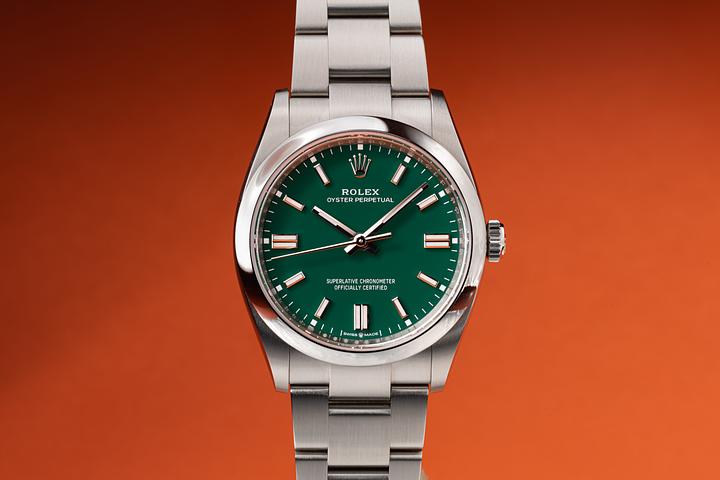Rolex John Mayer Daytona: Green Dial Gold Icon Explained
.jpeg)
The Rolex Daytona "John Mayer": A Contemporary Legend in Swiss Watchmaking
Alright, let’s dive in headfirst—because few watches have stirred the pot quite like the Rolex Daytona “John Mayer.” This shimmering yellow-gold icon, with its vibrant green dial and undeniable charisma, didn’t just emerge—it arrived like a mic drop in the world of horology. Anchored in the apex of Swiss watchmaking tradition, the Daytona John Mayer edition has transcended timepiece status. It’s become cultural shorthand for excellence, rarity, and, yeah, that pixel-perfect blend of music and luxury. And look, whether you’re new to the watch scene or twelve watches deep into your collection, this particular Daytona warrants a closer look.
Why the Rolex Daytona Matters So Much
The Rolex Cosmograph Daytona, born in 1963, was designed with motorsports in mind. It’s a chronograph—aka a stopwatch and a watch in one—and it became legendary by measuring speed, not just prestige. Over the years, it’s become a cornerstone in the pantheon of Swiss luxury watches, and its desirability isn’t fueled by mass advertising but, rather, low supply and high obsession. Rolex doesn’t do flashy. It does enduring.
The Daytona holds mythical status in the watch world. And while any Daytona is worth talking about, the one with the “John Mayer” nickname? That one is now arguably king of them all. Odd, maybe—naming a Swiss chronograph after a Grammy-winning guitarist. But makes perfect sense after you unpack the story.
Wait—Why Is This Called the “John Mayer Daytona”?
The Rolex Daytona 116508 in yellow gold with a green dial debuted in 2016 and low-key lived in the shadows for a while. That is, until John Mayer, a known watch aficionado (with frighteningly good taste, to be fair), showed it off on a Hodinkee Talking Watches episode in 2019. He praised its unique color combo, likening it lovingly to “green apple jellybeans.” Collectors took notice—and the watch market, with the precision of a Swiss movement, lost its collective mind. Ever since, this reference has worn the informal title of “The John Mayer Daytona.”
It’s worth noting—and this matters—that Rolex never named it for Mayer. Nor did he design it. He just wore it, talked about it with the right blend of credibility and passion, and ignited a fascination that has yet to cool off. In a world obsessed with rarity and storylines, this one had both.
The Green Dial: Rolex Design Flex at Its Finest
Rolex isn’t exactly famous for being experimental. The company rarely strays from the formula, which is probably why the green dial felt like such a fresh curveball. Officially known as the Rolex Daytona 116508, this watch features an 18k yellow gold case and bracelet, paired with a dial in (what else?) Rolex’s signature green. It’s an elegant forestry kind of green—lush, deep, just a touch metallic under the light. Definitely not playful, but still—a bit cheeky in its boldness.
The dial includes three champagne-colored sub-dials, a nicely contrasting touch that leans luxe instead of loud. Chromalight markers add visibility in lower light, and of course, we get the trusty tachymeter bezel, etched into the gold. The whole thing practically glows.
Interestingly—and this is the part where most Rolex fans lean in—the watch wasn’t hyped on release. It was available, just, well, kind of left alone. And now? You try finding this in any boutique at retail. Good luck. The waiting list might be longer than Mayer’s own discography.
Under the Hood: The Engine That Keeps Time on Point
Let’s get technical for a second, because you can’t talk Rolex without praising what’s inside. Beating beneath that green and gold is the Rolex caliber 4130—a self-winding mechanical chronograph movement defined by simplicity and precision. Developed in-house, the 4130 is something of a marvel. Fewer components. More reliability. It’s the horological equivalent of songwriting that sounds easy but is anything but.
This movement holds a 72-hour power reserve and, like every modern Rolex, it’s a Superlative Chronometer. That means it’s accurate to within −2/+2 seconds per day—twice as precise as industry standard. And yeah, it has that comforting—and honestly addictive—Rolex rotor winding system that harnesses movement fluidly, smoothly, beautifully. The whole thing is, frankly, overbuilt in the best way.
Why Collectors Are Still Searching for This Watch
Part of the collector craze comes down to simple math: limited availability plus public influence equals demand skyrocketing. But with the John Mayer Daytona, it’s more layered. There’s resale activity, of course—it’s trading well north of retail on the secondary market—but it’s also about elemental appeal. The colors feel rebellious, yet cohesive. It’s gold, yes, but well-balanced enough to be worn daily (assuming your lifestyle leans to the tailored-coffee-and-personal-driver end of the spectrum).
And let’s not forget that Mayer himself is no celebrity dilettante. His watch chops are legit. He understands vintage Pateks, obscure IWC pilots, and prized Rolex reference numbers like someone with an actual obsession, not just good stylists. That passion showed. Enthusiasts saw it, and the emotional connection followed. Boom—instant classic.
Final Thoughts: The John Mayer Daytona and the Timeless Pull of Swiss Watchmaking
So look—this isn’t just another celebrity-endorsed accessory. It’s a case study in how a design sleeper can transform into a collector’s grail thanks to the perfect storm of quality, timing, and public narrative. The Rolex Daytona 116508 with green dial is exactly what Swiss watchmaking excels at: timeless engineering, subtle boldness, and versatility packed into a 40mm frame. It’s playful without being flippant. Serious, without taking itself too seriously. This is Rolex doing what Rolex does best: staying quiet while the world talks. And if you’re lucky enough to own one—or somehow snag one at MSRP—you’re not just getting a watch. You’re holding a moment in horological history that probably started in Switzerland but now spans collectors’ wrists around the world. Including, of course, John Mayer’s.




